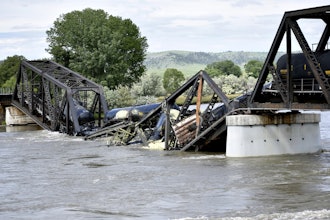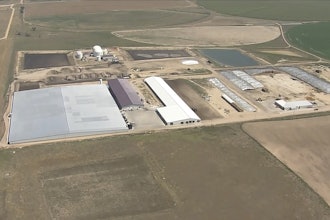
As a general rule, we can define two primary categories of workplace safety: risks to employees (such as sudden medical conditions or intruders in the building) and risks to company property (such as fire or flooding).
While nobody is expecting an employee to single-handedly stop a flood from hitting the building, an employee with proper training can help move the most valuable items to an area away from floodwaters before the water hits. Even if employees can’t stop a threat, they can help minimize losses, but not without the right training.
When To Train Employees on Safety
The best time to train your employees on safety is before you hire them or before they start working on a task with some element of risk to it. For example, you should provide training on equipment like fire extinguishers when employees first join the company because you don’t know when they’ll experience a fire. (If possible, try to include at least some existing employees in the training when showing new hires how to use the equipment. Including them will help ensure they don’t forget the training.)
Other training can wait until it’s necessary to show someone how to use it. For example, manufacturing equipment often has specific safety protocols, but most employees don’t need to learn anything other than “keep this far away” unless they operate the equipment.
Classifying Threats
We’ve already classified threats into risks to employees and company property, but there are also a few other ways to consider threats. These affect how you should train your employees.
- Sudden threats can come out of nowhere (or at least appear to) and require decisive responses to mitigate. Things like heart problems, where you need a defibrillator, and fires requiring an extinguisher are sudden threats. The earlier an employee can respond, the better, although they can’t solve every health problem regardless of training.
- Long-term threats are those you can receive notifications about, such as a dangerous storm or incoming floods. These can offer anywhere from minutes to years of lead time, depending on the threat and where you are. For example, if you’re in a flood-prone area, you should assume you’ll be flooded and plan accordingly.
- Long-term threats are significantly easier to deal with because you have options for finding and creating solutions. However, you should create your responses as soon as possible, rather than waiting and potentially finding yourself with no plan when the threat hits. With this, you also have a chance to decide what you should and shouldn’t train employees on. If you’re expecting a storm to hit in a few days, you can ask them to help move equipment to a safe place. If the building is already flooding, it may be too dangerous to ask them to come in.
The Cost of Safety Training
One thing that makes companies hesitate about safety training is the cost. All safety training requires some time to get through, although the actual expense can vary significantly by position. You can complete some safety training in a few minutes, while others may take days. That said, there’s only one thing that matters money-wise: It usually costs far less to train employees than to skip the training and accept a preventable loss.
Think of it this way: A building burning down (and equipment with it) is a significant loss for the company. Fire insurance may be able to pay for some of the losses, but it could still lead to losing the business. An employee with a few minutes of training may be able to stop that fire.
A small, known cost to significantly reduce the chance of a huge future cost is generally a good exchange. Any harm to an employee is a loss to their productivity, so it’s in the company’s best interests to protect them even before you consider ethics or legal requirements.
The Effects of Adequate Training
Adequate training in workplace safety has many benefits for employees. First, it can provide a significant boost to employee morale. Employees who feel safe performing dangerous jobs tend to work faster and with fewer complaints than employees who feel at risk - this directly links to better productivity and, over time, can bring a significant return on your investment.
Second, it trains employees to spot potential risks in the workplace, from signs of heart attacks to indicators that something is wrong with your equipment. Many problems have warning signs before they occur, so adequate training can transform a sudden threat into a long-term one. It’s easier to replace a frayed cable than a burned-down building.
Third, workplace safety training can eliminate some hazards. Employees who are conscious of risks are unlikely to take actions that could create a problem, which means the company doesn’t have to spend more time or money fixing it.
Fourth, healthy employees tend to have more days on the job. They may need to take more days off without the right safety training, especially if risks or harms compound over time. Experienced employees are more productive, so the more often they’re out sick, the greater the costs.
In short, the long-term benefits of training employees on workplace safety and managing risks significantly outweigh the costs.





















